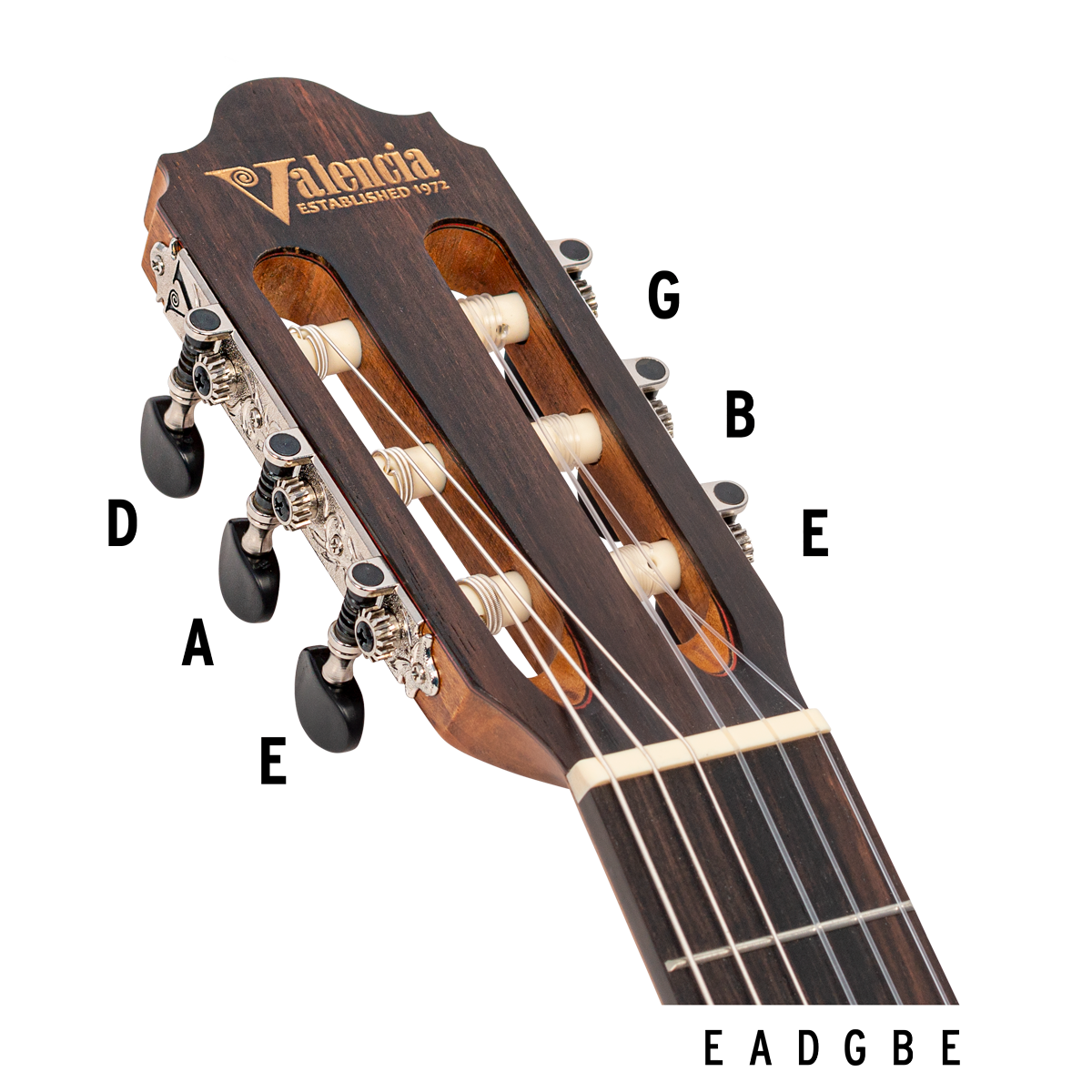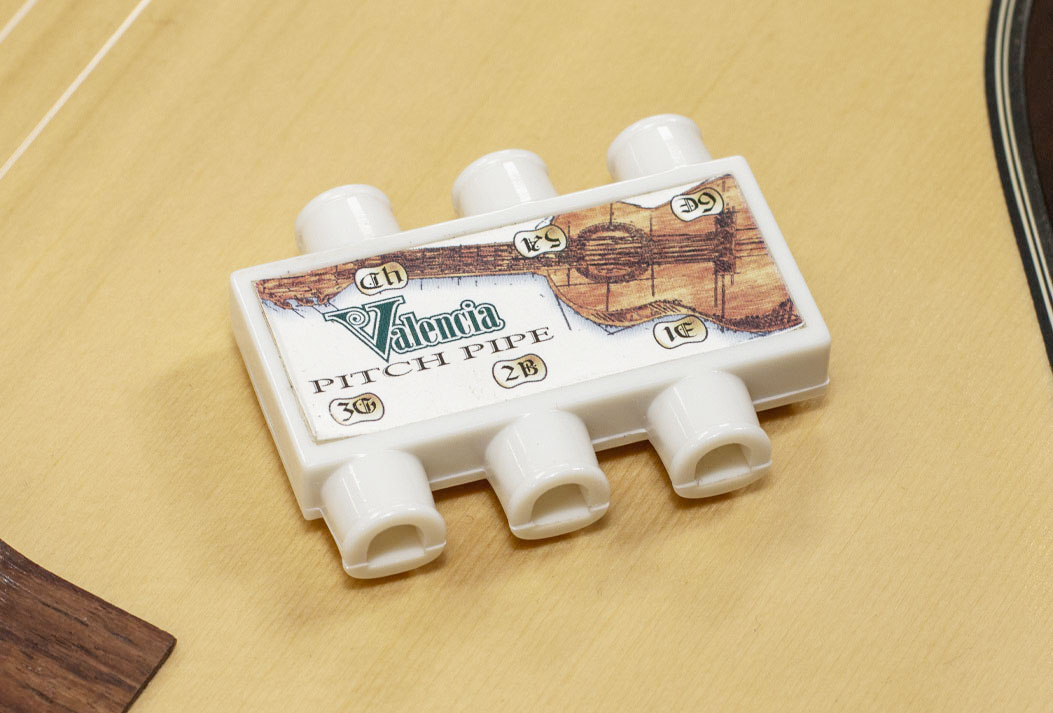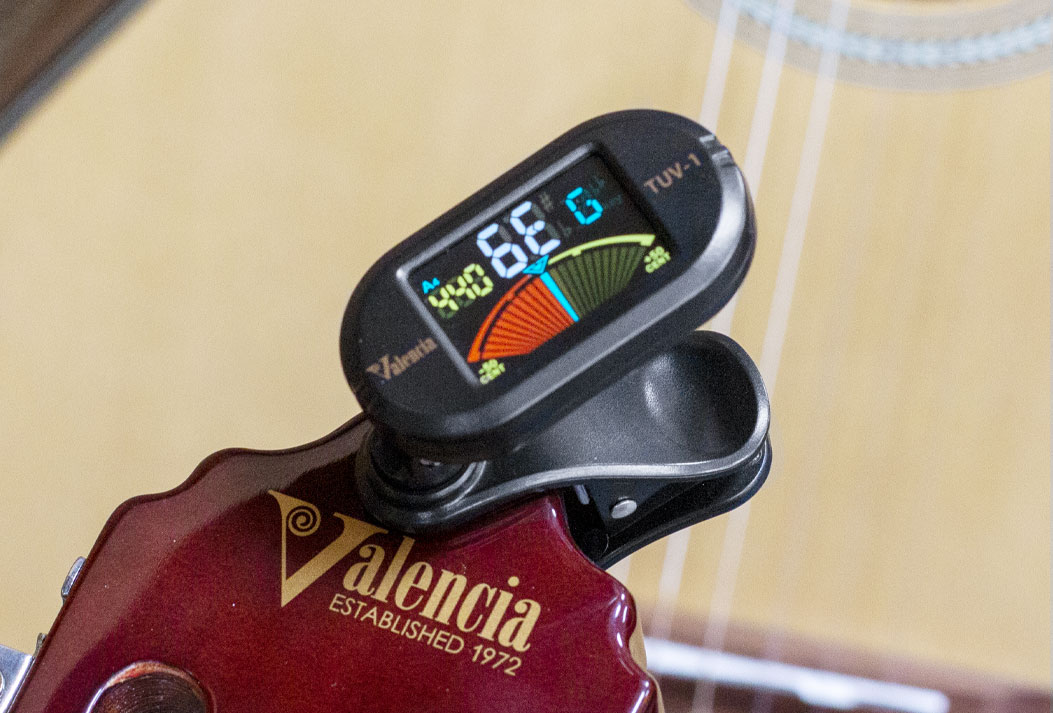Information
How to tune your Guitar
Overview
It’s important to ensure your guitar is “in-tune” every time you play . This way your playing will sound “right” and pleasing to the ear.
The tuning of your strings may change due to stretching or slackening of new strings. This often occurs until the strings are “played-in” – this can generally take a week or two after new strings have been fitted or when your guitar is very new. Changes in temperature and humidity and even the act of playing may cause string to go out-of-tune.
It is a good idea to first check your guitar’s tuning every time you begin to play or practice and check the tuning frequently while you are playing.
Names of the Strings

Before you start tuning you should know the names of the strings.
The names of the open strings on the guitar from low (thickest string) to high (thinnest string) are:
E, A, D, G, B and E.
Tuning Aids

Pitch Pipes
A pitch pipe is a small device used to provide a pitch or reference note to tune your guitar.
Place one of the pipes (start with E) in your mouth and blow – this will provide a reference note upon which to tune the E string on your guitar.
To tune the string to the corresponding reference note turn the machine head button away from you and to the left, to tune the note “up” in pitch and towards you or the right, to tune the note “down”.
Repeat this process for all remaining notes and strings.

Electronic Tuner
The easiest and most accurate way to tune your guitar is with the help of an electronic tuner. There are numerous types of guitar tuners available and most are relatively inexpensive and simple to operate. The screen allows you to easily tune each string individually, by indicating whether the notes are sharp (too high), flat (too low) or in tune. Tuning using other methods may be a little more difficult for a beginning guitar player and it may take some time to master. So we recommend you purchase an electronic tuner.
